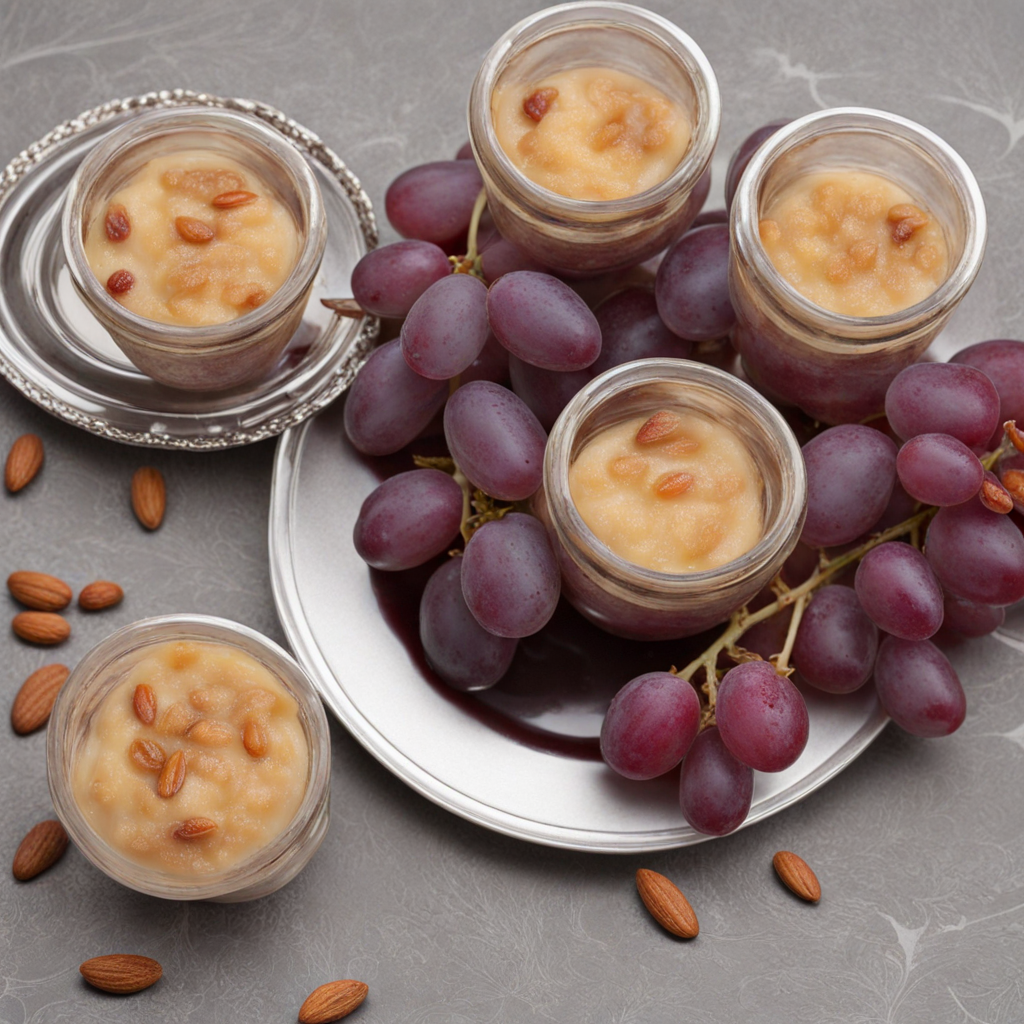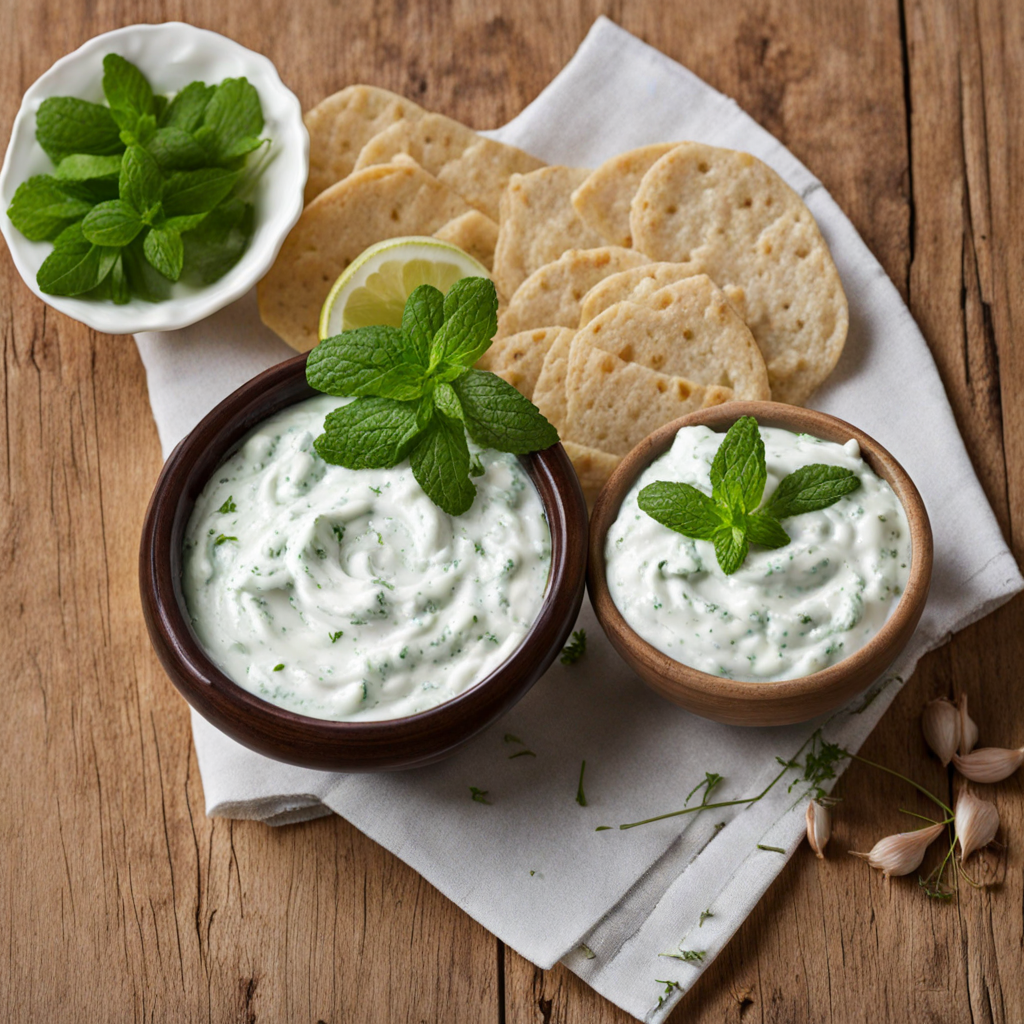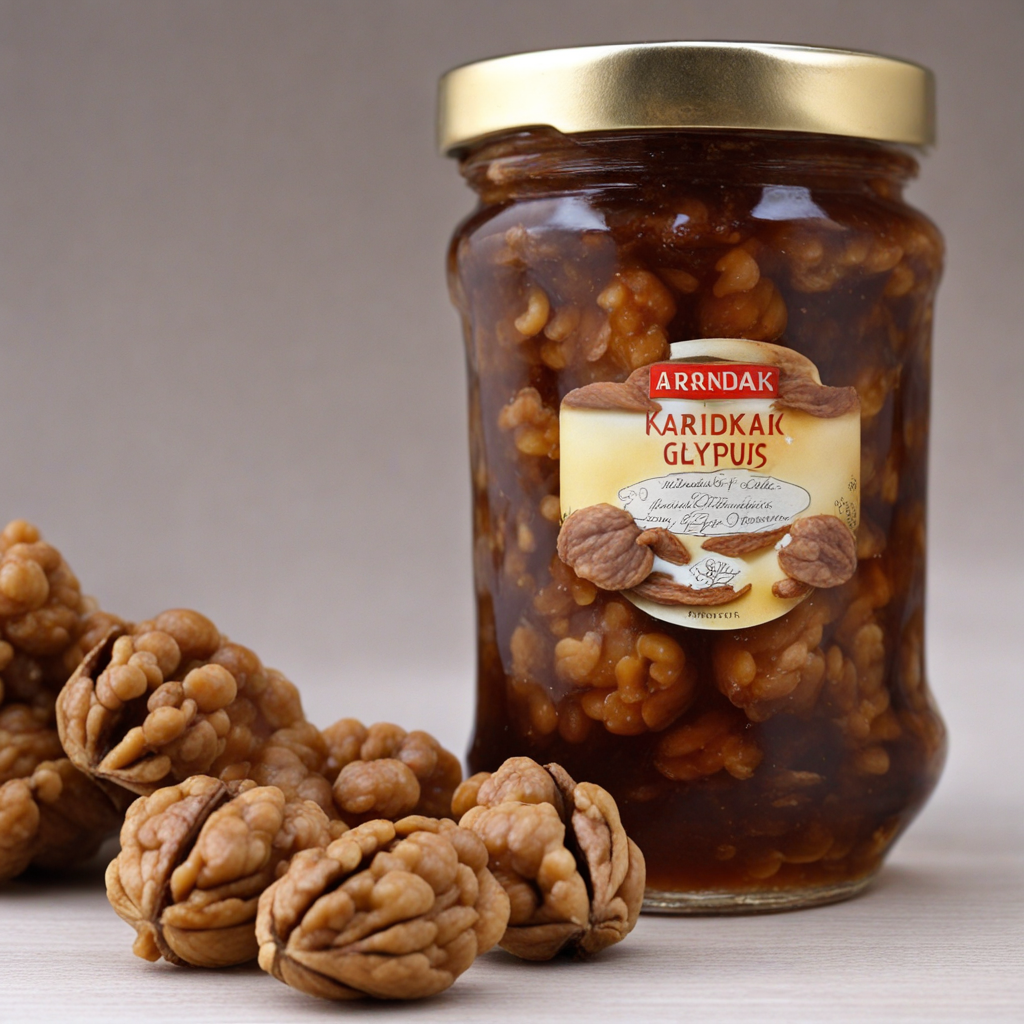Flaounes
Flaounes are a traditional Cypriot pastry that beautifully encapsulate the island's rich culinary heritage. These delightful treats are made from a flaky dough that is often enriched with yogurt or milk, giving them a tender and buttery texture. The pastry is typically shaped into a round or rectangular format, crimped at the edges to create a rustic, homey appearance. Flaounes are particularly popular during Easter celebrations but can be enjoyed year-round, making them a versatile addition to any meal or snack time. The filling of Flaounes is what truly sets them apart, showcasing a harmonious blend of flavors. The primary ingredient is usually a mix of aged cheese, such as Halloumi or a local sheep's milk cheese, which imparts a rich, savory taste. The cheese is combined with fresh mint, a staple herb in Cypriot cuisine, which adds a refreshing note to each bite. Some variations may include a touch of semolina, eggs, or even raisins, offering a subtle sweetness that contrasts beautifully with the savory elements. This unique fusion creates a satisfying and complex flavor profile that intrigues the palate. When baked to golden perfection, Flaounes develop a delightful crispiness on the outside while remaining soft and cheesy on the inside. They are best enjoyed warm, allowing the cheese to stretch and ooze with every bite, creating a comforting and indulgent experience. Flaounes can be served as a snack, appetizer, or even a light meal, paired with a side of olives or a fresh salad. Their unique taste and texture not only reflect the culinary traditions of Cyprus but also invite food lovers to explore the island's rich cultural tapestry through its flavors.
How It Became This Dish
The Rich History of Φλαούνες: A Cypriot Culinary Treasure Φλαούνες (flauenes) are a quintessential part of Cypriot cuisine, representing not only a delicious pastry but also an enduring cultural symbol. These delightful cheese-and-herb-filled pastries are traditionally associated with Easter celebrations in Cyprus, embodying a rich tapestry of history, tradition, and community. #### Origins and Ingredients The origins of φλαούνες can be traced back to the Byzantine era, when Cyprus was a significant hub of trade and cultural exchange in the Eastern Mediterranean. The island’s strategic location allowed it to absorb various influences from Greek, Turkish, and Middle Eastern culinary practices. The base of φλαούνες consists of a rich dough made from flour, olive oil, and milk, which is often enriched with eggs. The filling traditionally features a combination of local cheeses—most notably, a semi-hard cheese called "halloumi" and a local fresh cheese similar to ricotta—alongside herbs such as mint and sometimes aniseed. Cinnamon and sesame seeds often find their way into the mix, lending a unique flavor profile that sets φλαούνες apart from other pastries. The use of these ingredients reflects the agricultural bounty of Cyprus, where sheep and goat farming, as well as herb cultivation, have thrived for centuries. #### Cultural Significance Φλαούνες are primarily prepared during the Easter period, symbolizing the end of Lent and the arrival of spring. The act of making φλαούνες is often a communal activity, involving families gathering to prepare the dough and filling, signifying unity and the sharing of traditions. Each family may have its own unique recipe, passed down through generations, which helps to foster a deep sense of identity and belonging within the community. Beyond Easter, φλαούνες are also enjoyed during other celebrations and special occasions, reflecting their importance in the social fabric of Cypriot life. The pastries are often exchanged among friends and family, reinforcing bonds and expressing goodwill. #### Development Over Time As Cyprus experienced various historical shifts—from being a colony of different empires to gaining independence—the culinary landscape, including the tradition of making φλαούνες, evolved. The Ottoman Empire’s rule over Cyprus from the 16th to the 20th centuries introduced new flavors and cooking techniques that intermingled with existing Greek culinary traditions. This fusion can be seen in the use of herbs and spices, which became more diverse as the island welcomed new influences. In the modern era, the popularity of φλαούνες has spread beyond Easter celebrations. They are now found in bakeries and restaurants throughout Cyprus and enjoyed by locals and tourists alike. The traditional method of preparation has been preserved, though some variations have emerged. Contemporary recipes may incorporate different types of cheese or even vegetarian fillings, catering to changing dietary preferences. #### The Symbol of Resilience In the face of political strife and division, particularly during the late 20th century, φλαούνες have served as a symbol of resilience and cultural continuity for the people of Cyprus. The culinary arts often provide a means of preserving identity, and for many Cypriots, the preparation and sharing of φλαούνες encapsulate the essence of their heritage. Culinary competitions and festivals dedicated to Cypriot food have also played an essential role in promoting and preserving traditional recipes. Events showcasing φλαούνες not only celebrate the dish itself but also the broader cultural landscape of Cyprus, bringing together people from different backgrounds to appreciate the island’s rich gastronomy. #### The Contemporary Scene Today, as global culinary trends continue to evolve, many chefs on the island are reinterpreting traditional recipes, experimenting with flavors and presentations while maintaining the core elements of φλαούνες. Some modern variations include incorporating international ingredients or fusion elements, appealing to a younger generation of food enthusiasts and tourists eager to explore the flavors of Cyprus. Additionally, the rise of health-conscious eating has led to adaptations of the traditional φλαούνες recipe. Whole grain flours, reduced-fat cheese, and alternative fillings featuring local vegetables have begun to emerge, reflecting a broader trend in the culinary world toward healthier options without sacrificing flavor. #### Conclusion Φλαούνες encapsulate a profound connection to the land, culture, and community of Cyprus. From their Byzantine roots to their role in contemporary Cypriot cuisine, these pastries tell a story of resilience, adaptation, and celebration. They represent not just a dish but a living tradition that continues to evolve while holding steadfast to the values and flavors that have defined Cypriot identity for centuries. As you take a bite into a freshly baked φλαούνα, you are not only indulging in a delicious treat but also partaking in a rich cultural narrative that speaks to the heart of Cyprus. Whether enjoyed during Easter festivities or shared among friends and family, φλαούνες remain a cherished symbol of the island's heritage, a testament to the power of food to unite and inspire across generations.
You may like
Discover local flavors from Cyprus







